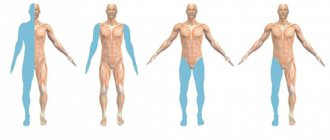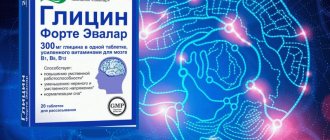Stresam, a tranquilizer or anxiolytic with a mild sedative effect, is a late-generation drug. This means that during its production the shortcomings and severe side effects of the predecessor drugs were taken into account. This medication does not cause severe drowsiness or interfere with the performance of major activities (unless, of course, the activities involve firing a firearm or driving a car). A patient who takes strezam to get rid of panic attacks is fully capable at home, and partially (depending on the severity of the initial neurotic state, the specifics of the main activity and the duration of the prescribed course of treatment) at work.
Composition and release form
Stresam is a psychotropic drug, available in the form of gelatin capsules with powder, intended for oral administration . The medication is distributed into blisters of 12 and 20 pcs., one cardboard package contains 2-3 blisters, instructions for use must be included. Capsules with a light body and a blue cap contain 50 mg of white powder without impurities and a specific odor. The therapeutic effect is determined by the components that make up the anxiolytic Stresam:
| Active ingredients | Concentration in 1 capsule, mg |
| Active ingredient: | |
| etifoxine hydrochloride | 50 |
| Excipients: | |
| lactose monohydrate | 119 |
| talc | 15 |
| microcrystalline cellulose | 10 |
| anhydrous colloidal silica | 3 |
| Magnesium stearate | 3 |
| Composition of the gelatin shell: | |
| indigo carmine (E132) | |
| gelatin | |
| titanium dioxide (E171) |
pharmachologic effect
Stresam is a tranquilizer (anxiolytic) that reduces the severity or suppresses anxiety, anxiety, fear, and emotional stress. The active ingredient of the drug, etifoxine, belongs to benzoxazine derivatives and has an autonomous regulatory effect. The anxiolytic activity of the drug is due to the direct and indirect effect on GABA (gamma-aminobutyric acid)-A receptors, thereby improving GABAergic impulse transmission to the central nervous system.
Pharmacodynamics and pharmacokinetics
Being an anxiolytic, Stresam has sedative and mild sedative properties. Since etifoxine hydrochloride does not affect the speed of psychomotor reactions, this medication is considered a daytime tranquilizer. The active component directly affects ion channels in the synapses of the nervous system, thereby inhibiting the transmission of nerve impulses. Etifoxine hydrochloride penetrates the placental barrier, which is important to know when treating pregnant women.
The drug Stresam is quickly absorbed from the gastrointestinal tract and enters the systemic circulation. The maximum concentration in plasma is reached 2–3 hours after oral administration of a single dose. The metabolic process takes place in the liver. The elimination period of the active metabolite called diethylethifoxine is 6-20 hours. The drug is excreted from the body with urine, less often with bile, unchanged.
Side effects
- leukocytoclastic vasculitis;
- itching;
- cytolytic hepatitis;
- slight drowsiness that appears in the first days of treatment and usually disappears on its own during treatment;
- hives;
- Stevens-Johnson syndrome;
- lymphocytic colitis;
- maculopapular rash;
- erythema multiforme;
- metrorrhagia in women taking oral contraceptives;
- Quincke's edema;
- swelling of the face;
- anaphylactic shock;
- drug-induced hypersensitivity syndrome with eosinophilia.
By
Indications for use of Strezam
According to the instructions for use, this medication is prescribed as part of a complex treatment regimen for different levels of anxiety. It is used as an independent medicine for insomnia. Other medical indications for use:
- increased nervousness, irritability;
- inner restlessness;
- depression;
- depressed mood;
- fear of unknown etiology;
- apathy;
- decreased activity;
- anxiety-phobic disorders;
- autonomic disorders;
- as part of complex treatment of somatic diseases.
Directions for use and dosage
Instructions for use of Strezam are necessary to familiarize yourself with the medicine. The doctor determines the daily dose and course of treatment on an individual basis. Strezam is prescribed orally. The recommended daily dose is 1 capsule three times a day. Second treatment option: 2 pcs. twice a day. Strezam should be taken before meals, washed down with plenty of water. The duration of drug therapy varies from several days to 3-6 weeks (depending on the nature of the pathology). Taking capsules for longer than 12 weeks is contraindicated.
Articles on the topic
- Omnik - instructions and mechanism of action, contraindications, side effects, dosage regimen and analogues
- Afobazol - instructions for use, dosage for children and adults, contraindications and reviews
- Sulfur ointment against fungus for children and adults
Consequences of drinking alcohol
There are no drugs without side effects, this is especially true if the dosage and course of treatment are not followed. This also applies to alcohol. After any substance, the body needs recovery, and this takes time.
Relieving stress and anxiety with two substances at once is a bad idea. Excessive alcohol consumption will worsen the condition that the medicine is treating.
Popular side effects:
- insomnia;
- increased adrenaline levels;
- heart rhythm problems;
- vasospasm;
- hypertension;
- loss of some liver functions;
- central nervous system dysfunction;
- noise in ears;
- intoxication;
- severe drowsiness;
- difficulties in movement and orientation in space;
- slow reaction.
When constantly mixing the drug with alcoholic beverages, not only the therapeutic effect is reduced, but a relapse of the disease occurs. Before starting treatment, it is important to give up the drink; this will reduce the risk for the patient and lead to a speedy recovery.
Drug interactions
Stresam tablets are often used as part of complex treatment when taken in parallel with representatives of other pharmacological groups. The instructions for use mention drug interactions:
- When combined with medications containing ethanol, the risk of developing side effects of Strezam significantly increases.
- In combination with barbiturates, hypnotics, opium analgesics, antihistamines, and neuroleptics, the overall therapeutic effect is enhanced . The simultaneous use of such medications is contraindicated.
- Since the drug Stresam contains lactose monohydrate in its chemical composition, this point is important to consider when treating patients with congenital lactose intolerance or malabsorption syndrome.
Stresam and alcohol: compatibility
Regardless of the period of gestation of the child, the drug is not prescribed to pregnant women.
If there is a need to use medication during lactation, breastfeeding is artificially interrupted.
If pregnancy occurs during therapy, where Stresam is present among the prescriptions, you must urgently inform your doctor about the discovered fact.
Only a qualified specialist makes the decision to stop or continue treatment.
Tranquilizers and ethanol-based drinks have different effects on the body.
Alcohol makes the brain work more actively, increases blood pressure, and speeds up the heart rate.
Stresam relieves emotional stress, irritability and anxiety. The consequences of such a combination cannot be predicted.
The degree of development of side effects varies: from minor symptoms to serious health problems, even to a coma.
The most harmless consequence is considered to be the neutralization of the effect of the drug.
Pathological processes in the body, especially the functionality of the kidneys and liver, complicate the situation.
Therefore, combining alcohol with an anxiolytic is prohibited.
Side effects
In most clinical cases, the drug is well tolerated by the body. In case of hypersensitivity to the components, doctors do not exclude the occurrence of side effects. In this case, the patient’s medication is changed or the dosage of Stresam is adjusted individually. Side effects:
- from the gastrointestinal tract (GIT): nausea, diarrhea, lack of appetite, change in taste, vomiting, flatulence;
- from the central nervous system (CNS): drowsiness, dizziness, lethargy, apathy, inhibition of reactions;
- from the skin: urticaria, angiodermatitis, small rash, itching, hyperemia and swelling of the skin, dermatitis, eczema, rarely - anaphylactic shock.
STRESAM: new opportunities in the treatment of anxiety conditions
| Anxiety, a feeling of internal tension, sleep disturbances, irritability, inadequate emotional reactions - today one can observe a significant prevalence of these disorders in the population, which may be associated with the intense rhythm of modern life, as well as a decrease in stress resistance in conditions of lack of time, excess information as a consequence of rapid progress . The frequency of these disorders is quite high and, according to various authors, is 10–20% (Baldwin DS et al., 2005). The state of anxiety, as it progresses, leads to significant disturbances in daily activities, professional activities, social contacts, etc., therefore, adequate treatment of such disorders has great social significance. |
It is necessary to clearly distinguish between various pathologies accompanied by a state of anxiety. In 1894, S. Freud, in his work “Justification for separating certain syndromes from neurasthenia: anxiety neuroses,” pointed out that anxiety and panic, as the maximum degree of its severity, can accompany various dysfunctions of the body. Classical anxiety disorders represent a separate group of nosological forms, the treatment of which is within the competence of psychiatrists and includes the use of various psychotropic drugs, mainly antidepressants and, to a lesser extent, tranquilizers. At the same time, the main contingent of people with manifestations of anxiety are patients with various forms of neuroses (neurasthenia), psychosomatic pathology, menopausal syndrome, elderly and senile people with symptoms of anxiety caused by age-related changes in the brain, as well as people who have been in a state of chronic stress for a long time (“manager syndrome”, etc.). The vast majority of people in the mentioned categories do not regard their condition as a disease and do not turn to doctors, preferring to treat themselves, often with the help of alcohol or medications that are inadequate for the given situation, which significantly worsens their condition. Therefore, in such circumstances, the role of the pharmacist and his competent advice especially increases.
It is important to remember that anxiety is a complex complex syndrome caused by specific disturbances in neurochemical processes in the brain, and therefore requiring the use of specific means of correcting these changes (Salzman C. et al., 1993). For anxiety states, various tranquilizers or anxiolytics, as well as sedatives, are most often prescribed. As for the latter, it should immediately be emphasized that very popular sedatives (which, in particular, include valerian, motherwort, hops, mint, peony, lemon balm, etc., as well as bromides), effectively eliminate symptoms such as Nervousness, irritability, excitement, while improving sleep, etc., at the same time do not affect the feeling of anxiety itself, since they do not affect the mechanisms of development of this condition in the central nervous system. As a result, all sedatives in this case can be used only to eliminate concomitant neurotic manifestations, but not as a tool for treating anxiety.
The use of specific drugs—anxiolytics—in the treatment of anxiety is pathogenetically justified. The most widely used anxiolytics are benzodiazepines (diazepam, oxazepam, phenazepam, etc.).
At the same time, despite the popularity of benzodiazepine anxiolytics, they are characterized by well-known side reactions, to one degree or another characteristic of almost all representatives of this class of drugs: psychomotor retardation, drowsiness, lethargy, dizziness, muscle relaxation, deterioration of memory and thinking, development addiction with long-term use (over 1–2 months), increased incidence of side effects when taken in combination with other neuro- and psychotropic drugs, etc., and the mentioned complications become significantly more frequent with age (Krasucki C. et al., 1999).
The use of so-called new generation benzodiazepines with a short half-life made it possible to reduce the manifestations of the noted deficiencies, but did not completely eliminate them. In addition, the rather high price of such drugs, as well as the inclusion of the vast majority of benzodiazepines in the list of psychotropic drugs with corresponding strict requirements for their prescribing, significantly limits their availability. Therefore, an alternative way to develop drugs to eliminate anxiety was the synthesis and introduction into practice of a new generation of anxiolytics of a non-benzodiazepine nature, ideally having the following clinical and pharmacological properties:
1) elimination of the entire complex of anxiety-neurotic manifestations - anxiety itself, tension, fear, psycho-vegetative disorders, sleep disorders;
2) ensuring the maintenance of the usual rhythm of life, social activity (work, study, etc.);
3) safety (minimal or no serious side effects);
4) compatibility with other somato- and psychotropic drugs;
5) ease of use;
6) economic accessibility and the absence of strict restrictions on prescribing.
One of these drugs, reflecting the latest world achievements in the field of psychopharmacology, is STRESAM (ethifoxine).
STRESAME is an original drug developed in France and produced by the French company. Its active substance - etifoxine, a benzoxazine derivative - has an original mechanism of action that sets it apart from all other anxiolytics, which is characterized by maximum selectivity and physiological action in relation to the influence on all parts of the development of the anxiety symptom complex (Schlichter R. et. al., 2000).
STRESAM almost completely meets the mentioned criteria for an ideal anxiolytic: it effectively eliminates all manifestations of anxiety (tension, restlessness), feelings of fear, improves sleep, the activity of the cardiovascular system and gastrointestinal tract, which are often disturbed during states of anxiety. STRESAM is devoid of a significant number of disadvantages of benzodiazepines (Micallef J. et al., 2001): it does not have a negative effect on psychomotor functions, memory and thinking, does not cause lethargy, drowsiness, muscle relaxation, does not affect the perception of information, etc., including in old age, and with long-term use (over 1 month). Side effects sometimes include dizziness and the development of allergic skin reactions. STRESAM also does not cause addiction. Overdose is observed only in doses many times higher than recommended, and is limited to the phenomena of hypotension, which is eliminated by appropriate treatment.
STRESAM, like the vast majority of medicines, is not recommended for use during pregnancy and lactation, as well as in children under 15 years of age.
An important practical advantage of STRESAM is that it is prescribed on standard prescription forms, in contrast to benzodiazepines, which must be prescribed on special forms.
STRESAM is available in the form of capsules containing 50 mg etifoxine hydrochloride. The dose and duration of treatment is determined by the doctor, usually 1 capsule 2-3 times a day for 2 weeks to 3 months.
Thus, STRESAM is an effective new generation anxiolytic, which opens up further prospects in the treatment of anxiety states of various natures. n
Additional information about the drug STRESAM is available on the website www.brupharm.com
S.G. Burchinsky, Institute of Gerontology of the Academy of Medical Sciences of Ukraine, Kyiv
Overdose
If you systematically exceed the prescribed doses, your general condition worsens sharply. Side effects increase, the patient complains of severe weakness throughout the body, lethargy, apathy, lethargy, dizziness, and decreased blood pressure. With such symptoms, it is necessary to immediately stop further treatment, rinse the stomach, artificially inducing vomiting. Afterwards, take sorbents (for example, activated carbon, Sorbex). Further treatment is symptomatic. There is no specific antidote.
Contraindications and overdose
The medicine should not be taken:
- For myasthenia gravis.
- If there are severe disturbances in the functioning of internal organs.
- Teenagers and very old people.
The drug "Strezam" is not given to people in a state of shock. Too much of the drug can cause:
- Severe drowsiness.
- Depression of consciousness.
There is no specific antidote to it. In case of overdose, gastric lavage is recommended. The drug should be stored so that children cannot reach it.
Contraindications
If the body is hypersensitive to synthetic components, the doctor refuses such a pharmaceutical prescription. The use of Strezam is not recommended for children under 18 years of age, pregnant women, or nursing mothers. The list of medical contraindications does not end there:
- myasthenia gravis (muscle weakness caused by disturbances in neuromuscular transmission);
- extensive damage to the liver and kidneys;
- states of shock;
- congenital galactosemia;
- lactose deficiency;
- glucose or galactose malabsorption syndrome.
Analogs
If Stresam is not available in the pharmacy or causes side effects, the doctor decides to introduce a replacement. Effective analogues with an identical mechanism of action in the affected organism:
- Meprobamate. This is a daytime tranquilizer with psychotropic action. Has a calming effect on the central nervous system. According to the instructions, take 1-2 tablets orally. 2–3 times a day. The maximum single dose is 4 tablets. The course of treatment is determined individually.
- Temazepam. The anxiolytic is recommended for patients over 18 years of age. According to the instructions, take 7-35 mg once or 2.5-10 mg three times a day orally. You need to take the medicine 30 minutes before bedtime. The maximum dose is 60 mg per day.
- Amizil. It is a central anticholinergic with antispasmodic, antiserotonin and sedative properties. According to the instructions, the use of the drug is appropriate for depression and anxiety syndrome. The recommended dose is 1-2 tablets 3-4 times a day.
- Oxylidine. The anxiolytic is available in the form of an injection solution, which is administered parenterally. The dosage indicated in the instructions is 1-2 ml 2 times a day for 14-30 days.
- Tranquilar. Another tranquilizer that comes in tablet form. This is a complete analogue of Stresam, which is taken as part of complex therapy. The daily dose and course of treatment are determined individually.
Reviews from doctors and those who have undergone treatment
Doctors note the effectiveness of the medicine. After just one course of use, patients felt significant improvements. Their mood lifted, the feeling of constant anxiety disappeared, and their character “evened out.” One of the positive characteristics of the drug is that it does not cause addiction or withdrawal symptoms.
Patients who have undergone treatment with this medication also describe Strezam capsules well. Reviews emphasize that the medicine practically does not cause drowsiness, although it has a mild sedative effect.
Only at the very beginning of treatment a slight lethargy may appear, but, as a rule, it goes away on its own after a few days.
What else is good about the composition of Strezam? Reviews from both doctors and patients suggest that it has virtually no side effects. Only people who are hypersensitive to the medicinal substance may develop urticaria. However, almost no such cases have been recorded.
Stresama price
The medicine is sold in a pharmacy. It cannot be ordered online because it is a prescription medication. The average cost of 24 capsules of Stresam is 250-350 rubles. Prices depend on the number of capsules in one package and the pharmacy rating.
| Name of Moscow pharmacy | Price per pack of 24 capsules, rubles |
| Neopharm | 250 |
| Rigla | 270 |
| Dialogue | 290 |
| ZdravZone | 290 |
| NIKA | 305 |
| Evalar | 330 |
| Hello City | 355 |
When can you take the drug, after how long
The drug is allowed to be taken only after the last signs of a hangover have ceased. Based on the elimination time of the drug and alcohol, we can say that a man can take the medicine only after 14 hours, but for women - 20 hours after the last dose of alcohol.
The time depends on the amount of drink drunk, its strength, weight and age of the drinker. You also need to take into account related factors - the emotional and physical state of the person, ambient temperature, smoking while drinking the drink.
For example, if there are problems with the exocrine gland and the paired organ, the body devotes all its efforts to cleansing itself of toxins, which leads to a prolongation of the hangover. The doctor will tell you exactly how long you can drink.












